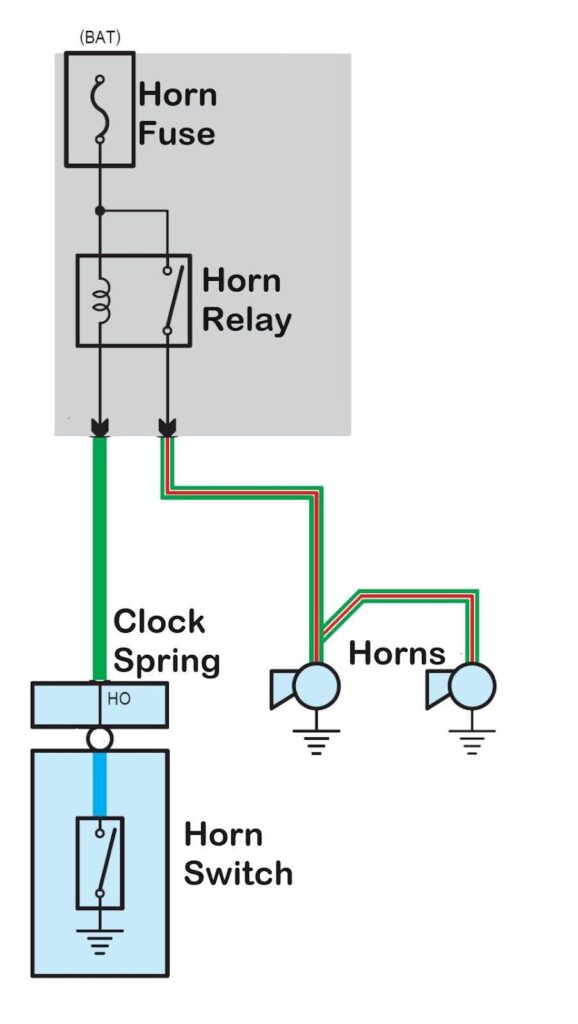Unnecessary honking can certainly be annoying, but car horns are loud for a reason. When used under the right circumstances, car horns play a significant role in reducing accidents by capturing the attention of distracted drivers. They alert motorists and pedestrians to dangers on the road. This is why it’s important for your car horn to always be in good condition. If it isn’t working, you’ll need to fix it as soon as possible.
Here are useful tips on how to fix a car horn that’s not working:
Prepare the Necessary Tools
With the right tools on hand, you’ll find it much easier to fix your damaged car horn. Prepare a fuse puller or pair of pliers, and a 12 volt test light. Depending on the issue, you’ll need a new car horn, fuse, or relay that fits your vehicle.
Inspect the Horn Fuse
One of the most common causes of a faulty car horn is a blown fuse. If this is the case, you’ll have to replace the fuse with a new one.
Use a fuse puller or a pair of pliers to remove the blown fuse, or, if you can get it out of there with your finger, go for it. You won’t get electric shock changing a fuse on a car.
To locate your vehicle’s horn fuse, you can refer to your owner’s manual or look at the fuse cover, which will usually have the layout of the fuses and relays in the fuse panel. The horn fuse can be in the under-dash fuse box or the junction box under the hood. Some vehicles may have as many as 4 fuse panels, and you might find one in the trunk or under the rear seat, believe it or not. Some will have a fuse panel on both sides of the instrument panel.
Check the Horn Relay
If all is well with the car horn fuse, then the problem might be the relay. Most vehicles have horn relays, but there was a time when some vehicles didn’t.
The horn relay is typically located under the dashboard, in the engine compartment, or mounted on the fuse box.
When you find the relay, the quickest test is to substitute another relay with the same part number and see if the horn works. Usually there will be another relay in the panel you can borrow for this, but make sure the relay part numbers match.
If it doesn’t, then you’ll need to use your test light to see if there are two B+ hot wires and two grounds (check for the two grounds with the horn button pressed). If you have no ground at the switch wire, you’ll need to find out why. It’ll be the switch or the wire leading to the switch.
Or it may be a module if the horn relay is controlled by a module that receives horn switch input and then closes the relay.
If you have ground that comes and goes as you press and release the horn switch, then the other ground should be the one going out to the horn.
If you have no ground on the wire going out to the horn (coming through the horn), then the horn itself may be at fault, but you can ground the wire at the horn and re-check. If you have a ground with the horn wire jumpered to ground but not with the horn plugged in, make sure the horn is grounded; or if there are two wires going to the horn, make sure the ground wire feeding the horn is connected to ground – you can also do this with your test light.
Examine the Horn Switch
While its exact location can vary, the horn switch is typically located on the steering wheel.

Accessing the switch requires removing the steering wheel cover, but we recommend asking a mechanic for help with this one.
If you decide to do it yourself, you first need to disconnect the battery and then wait 10 minutes for the capacitors in the airbag control module to deplete their charge.
Then you need to know how to get the steering wheel cover (airbag) off the steering wheel so you can access the switch. You need to be able to do it without damaging anything. If you don’t know how, have a shop do it.
If you do manage to access the switch, you’ll need to know what you’re looking at. Horn switches don’t look like regular switches. Use your test light to see if the switch is receiving a ground. If it isn’t, find out why. If it is, operate the switch and see if your test light shows that the ground is passing through the switch when it’s activated.
Check the Horn
In some cases, the problem is the car horn itself. You can usually find the car horn installed in the front of the engine compartment or near the front wheel well. To test the car horn, you’ll have to disconnect it from the wiring first.
Connect your test light between ground and the wire that triggers the horn and see if it lights up when somebody presses the horn button. If it does, and the horn is grounded properly, then replace the horn. Many vehicles have both horns (high and low note) mounted on the same bracket.
Be sure to clean the lugs and terminal contacts of any rust before reconnecting the horn.
Test the Horn Circuit
Wiring issues (chafed, cut, or chewed by rodents) can also cause your horn not to work.
Look for Other Symptoms
Check for other symptoms that might point to a bigger problem, such as a triggered air bag light, malfunctioning audio controls on the steering wheel, or a malfunctioning cruise control system. Paired with a car horn that doesn’t work, these signs all point to a faulty clockspring. Clockspring replacement is a difficult task, so we recommend asking a mechanic for help with this one.
Can You Drive With a Faulty Car Horn?
Driving without a working car horn is not only dangerous but also illegal. US states such as Washington, Arizona, and Florida require all motor vehicles to have a working horn that can be heard from a distance of at least 200 feet. Failure to comply with this can lead to different penalties, such as a traffic citation and fines.
How Much Does It Cost To Fix a Car Horn?
The exact price of a car horn replacement can vary depending on several factors, such as your vehicle’s year, make, and model. In general, however, you can expect to spend anywhere from $10 to $95.
Where to Buy a Replacement Car Horn
It’s important to get your faulty or inoperative car horn back in working order as soon as possible. Communicating with other drivers on the road will be difficult otherwise, especially in emergencies. Honking at an inattentive pedestrian or a swerving vehicle might just save a life, after all. Thankfully, you can count on CarParts.com for the replacement parts you need.
CarParts.com’s friendly and helpful customer service team is always here to help if you have questions about our latest offers. They’re happy to help you find the parts your mechanic asked for your vehicle’s car horn repairs. What’s more, they can tell you about our price match guarantee to help you save money.
Get your vehicle’s voice back up and running. Order a new car horn or other car horn repair parts at CarParts.com today.
Any information provided on this Website is for informational purposes only and is not intended to replace consultation with a professional mechanic. The accuracy and timeliness of the information may change from the time of publication.

































